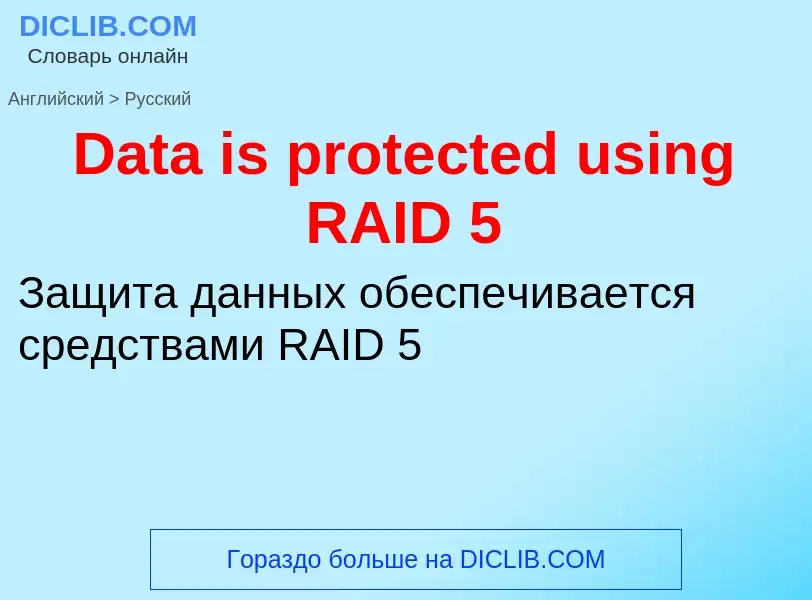Vertaling en analyse van woorden door kunstmatige intelligentie ChatGPT
Op deze pagina kunt u een gedetailleerde analyse krijgen van een woord of zin, geproduceerd met behulp van de beste kunstmatige intelligentietechnologie tot nu toe:
- hoe het woord wordt gebruikt
- gebruiksfrequentie
- het wordt vaker gebruikt in mondelinge of schriftelijke toespraken
- opties voor woordvertaling
- Gebruiksvoorbeelden (meerdere zinnen met vertaling)
- etymologie
Data is protected using RAID 5 - vertaling naar Engels
общая лексика
запись с расщеплением данных (Non-Redundant Stripped Array)
Этот уровень объединения дисков в массив определяет неизбыточную группу дисков (обычно три), на которые производится запись с использованием расщепления данных, что обеспечивает максимальную производительность дисковой подсистемы. Недостаток - чувствительность к надёжности отдельных дисков
Смотрите также
общая лексика
параллельный массив с контролем и исправлением ошибок (Parallel Array with ECC)
Смотрите также
Definitie
Wikipedia
In computer storage, the standard RAID levels comprise a basic set of RAID ("redundant array of independent disks" or "redundant array of inexpensive disks") configurations that employ the techniques of striping, mirroring, or parity to create large reliable data stores from multiple general-purpose computer hard disk drives (HDDs). The most common types are RAID 0 (striping), RAID 1 (mirroring) and its variants, RAID 5 (distributed parity), and RAID 6 (dual parity). Multiple RAID levels can also be combined or nested, for instance RAID 10 (striping of mirrors) or RAID 01 (mirroring stripe sets). RAID levels and their associated data formats are standardized by the Storage Networking Industry Association (SNIA) in the Common RAID Disk Drive Format (DDF) standard. The numerical values only serve as identifiers and do not signify performance, reliability, generation, or any other metric.
While most RAID levels can provide good protection against and recovery from hardware defects or defective sectors/read errors (hard errors), they do not provide any protection against data loss due to catastrophic failures (fire, water) or soft errors such as user error, software malfunction, or malware infection. For valuable data, RAID is only one building block of a larger data loss prevention and recovery scheme – it cannot replace a backup plan.

